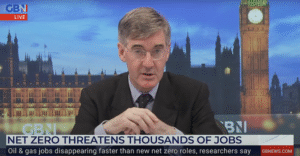How to Know Which Product to Crowdfund? 3 Useful Tips to Follow

Even though crowdfunding is a relatively old type of fundraising, the modern version of it dates back to 1997 when the British rock band Marillion invited their fans to chip in for their next tour. This successful campaign unlocked a new way of financing artists and entrepreneurs worldwide, subsequently launching such platforms as Indiegogo, Kickstarter, or GoFundMe.
It also created a new breed of scam artists that took a beautiful idea about communities coming together for a good cause and flipped it for their own nefarious needs.
There are quite a few such sad cases out there, but it doesn’t mean you must stop supporting budding artists and entrepreneurs. You just have to follow a few rules to steer clear of problematic campaigns.
1. No track record? No support
Every company in the world had humble beginnings, and it became common knowledge in Silicon Valley that most huge companies, including Microsoft and Apple, started out in one of the founder’s garages. Some companies switched their business model along the way – you might remember that Amazon started out as a tiny online bookstore.
But what all these companies have in common is that their founders either had a strong track record before they launched their golden egg or they had the necessary skills to build one. And most didn’t get their first investment before they already had a solid prototype.
Think like an investor when choosing which companies to support in crowdfunding. Ask yourself these questions before backing any project:
• Is it clear who the people and companies behind the project are?
• Is it the first time they have worked in this industry?
• Do they already have some market traction and a product they could be selling?
In many cases, novice founders are just very optimistic about their products but do not have enough experience to properly plan their development. So it’s good to back campaigns with founders who have expertise and experience or whose product is far beyond the concept stage.
A good example of a solid campaign is created by Pulsetto, a company that develops a neuromodulator device that stimulates the vagus nerve. This product helps the body enter the “rest and digest” mode and become calmer, feel better, and manage stress. The product is developed by a team of sleep experts led by sleep coach Vitalijus Majorovas.
Their team has already received a $550,000 investment from Kilo Health, the digital health company which is the 2nd fastest-growing in Europe on the Financial Times TOP 1,000 ranking, and has launched the first version of their device this summer.
The Indiegogo campaign will offer an opportunity to support the company mission, try out the product, and help create the best version of the device. It also cuts off the waiting time – if you order the device through the campaign, you will be able to try it out before Christmas this year.
2. Feels fishy? It probably is.
Yes, sometimes we all make mistakes. However, an obvious lack of care while preparing the campaign should be a clear red flag that makes you steer clear of the campaign.
The same could be said about the cohesion of the offer and the type of communication surrounding the campaign from start to finish.
You should check the refund policy, too. If there is none, or it’s not exactly clear what would happen to your money if the company cannot live up to its promises, you might reconsider backing them.
That’s especially true if you see multiple campaigns launched by the same company. Just one instance of such a campaign is iBackPack, a company that promised to create a backpack that would charge your phone. Before delivering its innovation, it actually launched a second campaign that offered a new, improved version of the backpack – and a couple of additional campaigns for similar products.
Combined, these four campaigns totaled $800,000, and none of the products were actually developed. Finally, the Federal Trade Commission took legal action against the creator.
It’s possible that you might get lucky, sure. But you could also repeat history – there are plenty of similar campaigns that failed their backers.
3. Trust, but verify
Crowdfunding campaigns focus on innovation but, in many cases, forget to show proof that they can provide the results. You will find tons of projects that are just concepts that seek out funding for development. Some companies will ask you to support a creator who is just starting out in the field. Others will provide you with a development timeline that sounds too good to be true (and it probably is).
How to deal with all of these lovely visions that might be hard to implement? Trust, but verify.
Once again, you should ensure that the crowdfunding campaign page and any other materials you can find online (company website, social media, blog posts) are mistake-free and all communicate similar messages.
Seek out any existing product users you might know, and look at the product reviews or chatter about the product on Reddit, Discord, or other forums.
Google the company and its founders and check if there are any articles by reputable news portals that cover their story. Did the company receive any awards, file any patents, or get mentioned in any research papers? Do they have a solid social media following already? A freshly made page is a sure red flag.
Any of these clues would help you figure out the next Oculus VR.
Oh, you didn’t know that this staple in VR gaming that was bought out by Facebook for $2 billion was actually crowdfunded? It used an Indiegogo campaign to create additional buzz for an already solid product. They had backing from industry influencers and strong support from the local VR community. And that was the secret to their success.
About Pulsetto
Pulsetto was founded by a certified sleep and recovery coach Vitalijus Majorovas and biomechanical engineer Povilas Sabaliauskas. Their team develops a non-invasive neuromodulation device that stimulates the vagus nerve, which helps people destress, relax, and sleep better. The company has received an investment of more than 500,000 Eur from a global digital health and wellness company Kilo Health. In 2022, the company launched its wearable device.
About Kilo Health
Kilo Health is one of the leading digital health and wellness companies with 4+ million customers worldwide. As of 2022, it’s the second fastest-growing company in Europe on the Financial Times TOP 1,000 ranking, the second-fastest growing company in Central Europe on the Deloitte Technology Fast 50 list, and the most popular employer of 2021 on MeetFrank. Kilo Health has over 15 innovative digital health products, 600+ employees, and offices across 5 European cities. The company is also a member of the DTx Alliance, Matter Community, and HealthXL.





